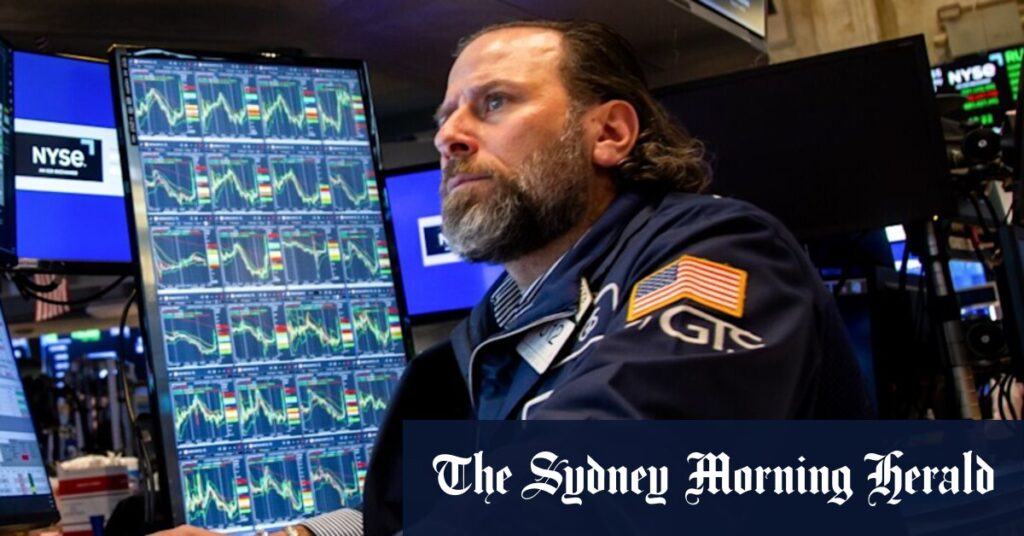
The Australian sharemarket took a significant hit today following the release of unexpected inflation data for the September quarter. The figures have cast doubt on the possibility of an interest rate cut at the Reserve Bank of Australia’s (RBA) upcoming meeting on Melbourne Cup Day. As of 12:11 PM AEDT, the S&P/ASX 200 index had fallen by 59.80 points, or 0.7%, to 8952.20, with financial stocks leading the decline. The Australian dollar, however, rose by 0.3% to US66.01¢.
According to the Australian Bureau of Statistics, headline inflation reached 1.3% over the three months to September, a sharp increase from the 0.7% recorded in the June quarter. This has pushed the annual rate of price growth from 2.1% to 3.2%. Meanwhile, the trimmed mean inflation, which excludes the most volatile price changes and is closely monitored by the RBA, was reported at 1% for the quarter and 3% over the year, nearing the upper limit of the RBA’s 2-3% target range.
Banking Sector Leads Decline
The banking sector bore the brunt of the market downturn, accounting for a significant portion of the ASX’s losses. Commonwealth Bank of Australia (CBA), the country’s largest stock, saw a 1.3% decrease. National Australia Bank fell by 1.6%, Westpac by 1.2%, and ANZ Bank by 0.4%. Wesfarmers, which operates major retail chains like Kmart and Bunnings, also declined by 1.3%.
In contrast, Woolworths shares rose by 1.5%, despite the supermarket giant reporting weaker-than-expected sales figures for the September quarter. Woolworths’ CEO Amanda Bardwell acknowledged that the company’s performance “was below our aspirations,” with food sales increasing by 2.2%, falling short of analyst forecasts. However, analyst Ben Gilbert from Jarden noted potential positive trends, citing October food sales growth of 3.2%.
Impact on Other Sectors
The inflation data and its implications for monetary policy have also affected other sectors. Oil and gas companies like Woodside and Santos continued their decline amid falling oil prices, with West Texas Intermediate dropping 1.9% to settle near $US60 a barrel. Woodside fell by 1.2%, and Santos by 0.8% in early trading.
CSL, Australia’s largest health company, continued its downward trajectory, losing another 5% after a significant drop on Tuesday due to vaccine skepticism in the US. Building products maker James Hardie also saw a 1% decline following weaker-than-expected profits reported by US homebuilder D.R. Horton.
In the mining sector, BHP and Rio Tinto posted modest gains of 0.7% and 0.2%, respectively. Gold miners experienced a rebound, with Northern Star climbing 2.7%, Evolution Mining 2.9%, and Newmont up 1.8% as gold prices steadied.
Global Market Reactions
On Wall Street, the S&P 500, Dow Jones, and Nasdaq all posted gains overnight, each setting all-time highs for a third consecutive day. The S&P 500 rose by 0.2%, the Dow Jones by 0.3%, and the Nasdaq by 0.8%. Investors are awaiting the Federal Reserve’s latest interest rate decision, expected on Wednesday, as well as key earnings reports from major US companies.
Tech giants Apple and Microsoft saw their valuations reach $US4 trillion during the session, joining Nvidia in this exclusive club. Analyst Clark Bellin from Bellwether Wealth commented,
“We expect another strong round of megacap tech earnings reports, given the relentless demand for AI technology and infrastructure.”
Amazon’s shares increased by 1% after announcing job cuts and a focus on artificial intelligence investments. Meanwhile, United Parcel Service and PayPal reported better-than-expected profits, while Royal Caribbean faced a decline despite strong profit figures due to revenue shortfalls.
Outlook and Implications
The RBA’s upcoming decision on interest rates will be closely watched, especially given the recent inflation data. The central bank’s previous statements indicated expectations for headline inflation to reach 3% by year-end, with trimmed mean inflation slightly decreasing. The market’s reaction to these developments underscores the delicate balance policymakers must maintain between controlling inflation and supporting economic growth.
As investors and analysts continue to digest the latest data, the focus will remain on how these economic indicators influence future monetary policy decisions both in Australia and globally. The interplay between inflation, interest rates, and market performance will be critical in shaping the economic landscape in the coming months.







